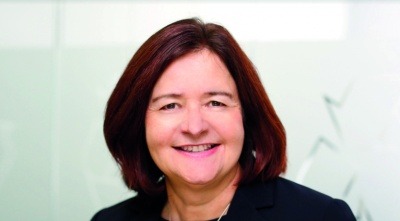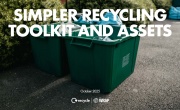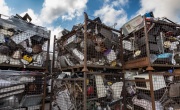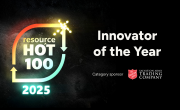Circular transition: Steps to be taken by the WEEE sector
Initially, producer responsibility was primarily focussed on diverting waste from landfill. To that end, the UK waste electricals and electronics (WEEE) system was designed around the collection of WEEE and weight-based targets, with producers having the principal obligations. The introduction of Extended Producer Responsibility (EPR) is changing this focus, and requires the whole lifecycle of EEE and WEEE, and how all actors within the WEEE system can deliver a circular economy, to be considered.
 The lifecycle of EEE and when and how it arises in the waste stream is affected by many variables. There is not a simple one-in one-out flow of electrical products being purchased and disposed of, a product can take many different routes, both desirable and undesirable, before, and if, it ultimately arises in the official waste stream. This impacts both on the ability of PCSs to meet collection targets and how products and materials can be used to create a more circular EEE and WEEE economy.
The lifecycle of EEE and when and how it arises in the waste stream is affected by many variables. There is not a simple one-in one-out flow of electrical products being purchased and disposed of, a product can take many different routes, both desirable and undesirable, before, and if, it ultimately arises in the official waste stream. This impacts both on the ability of PCSs to meet collection targets and how products and materials can be used to create a more circular EEE and WEEE economy.
Purchased products are not always replacement products, and even when they are the consumer can choose to give the product away, sell it for further use, donate it for repair or refurbishment, or retain it within the home. Our own consumer survey last year, found almost two thirds of the market have acquired a small household or kitchen appliance in the past 12 months, while only just over a third have disposed of one.
The Covid-19 pandemic also further emphasised this. In 2020 and 2021 the tonnage of EEE placed on the market increased by 10.2 per cent and 14.7 per cent respectively, when compared to 2019, yet WEEE collections fell. Although they were very unusual years, this serves to amplify the relationship between target achievement and the amount of WEEE made available for collection.
This ‘complex’ relationship between EEE placed on the market and WEEE arising in the waste stream makes the process of setting collection targets challenging. Perhaps more importantly, as the drive towards a circular economy gains momentum, the sector is recognising that a traditional tonnage based WEEE collection target does not capture or incentivise the circular economy business models of producers.
Whilst we await the outcome of Material Focus’ Metrics project, which is looking at alternative measures of system success, we share the suggestions made on Resource.co by Recolight’s Chief Executive, Nigel Harvey, who said “A WEEE tonnage target, on its own, may no longer be fit for purpose”.
A critical factor in designing a successful circular economy will be to review and define the roles of all actors in the system – collectors, retailers, local authorities, producers, reuse organisations and treatment organisations, businesses engaged in extending the life and use of EEE, as well as consumers and government. The absence of a mandatory reporting obligation for all actors that can influence the amount of WEEE made available for collection in the official system, means that many used EEE and WEEE flows are not counted. Many of these will be legitimate and beneficial flows that we should encourage, such as reuse and refurbishment, but not having a true picture of these activities, hinders estimating the true scale of damaging activities such as theft and illegal export that we want to prevent.
Understanding people’s behaviours and habits – exploring what motivates them to reuse, resell and buy second hand, return instead of hoarding, and recycle instead of wrongly discarding – gives us the opportunity to develop messages and solutions to enable people to do the right thing.
Importantly, the sector needs to understand where the stocks and flows of these products are to provide the right solutions for managing them. Research commissioned by Material Focus indicates that there is a considerable flow of WEEE lost to the circular economy through consumer hoarding of unwanted appliances.
Our own research supported this claim as UK households who were asked about purchasing new EEE and disposing of electricals in the past 12 months, reported that 10 per cent had acquired a large fridge/freezer, whereas only five per cent had disposed of one. A similar ratio was reported for coffee machines, six v three per cent and dishwashers, four v two per cent. For less frequently used items, such as sandwich makers, blenders and mixers, the difference was greater. Whilst some of the difference will be explained by households still using the retained product, our own previous research shows that hoarding on unwanted or broken products occurs.
PCSs have an important role in contributing to a circular economy for EEE, but they are only one actor in the system and do not have all of the levers needed to achieve this. This year’s WEEE Regulations review provides the opportunity to examine the role that every organisation should play in achieving a circular economy.






